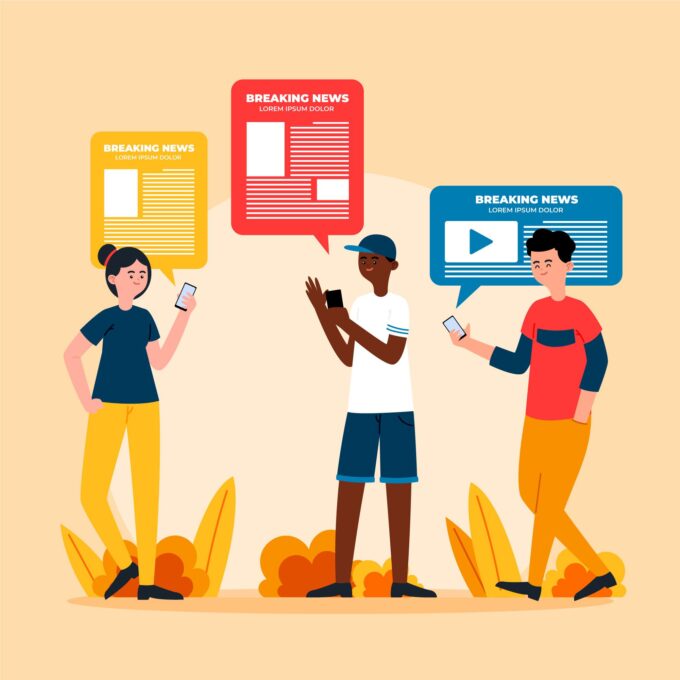There’s a common quote that goes, “If you’re marketing to everyone, you’re not reaching anyone.” These remarks by Will Francis, a DMI specialist, highlight a fact that is often overlooked in the quest for recognition.
To run a truly effective and successful marketing campaign, especially when working within the constraints of a tight budget. Strategic planning is key. One of the most impactful strategies you can employ is the creation of Customer Personas. It’s one thing to know your target audience; it’s another to truly understand them. Personas take you beyond broad demographics and help you zero in on the people who actually matter to your business, because when you know exactly who you’re talking to, you’re far more likely to be heard.
What Is a Customer Persona?
This is essentially a character profile of your ideal customer crafted using a blend of market research, data, and real-world insights – Also referred to as a buyer persona. A well-developed customer persona captures the key details that influence buying decisions: their likes and dislikes, goals and challenges, daily habits, motivations, and more. It’s not just about knowing who might buy from you; it’s about understanding why they would. And when you can speak directly to their needs, preferences, and pain points, your marketing becomes far more effective and much more human.
Why are customer personas important to your business?
- Tailored Messaging and Content: Personas enable businesses to craft highly tailored messaging that genuinely resonates with specific customer segments. Instead of a one-size-fits-all approach, you can speak directly to the unique pain points, aspirations, and motivations of each persona. This deep understanding allows for the creation of content that feels personal and relevant, significantly increasing engagement and conversion rates.
2. Optimised Platform Selection: Knowing your customer personas helps you choose the right platforms for your marketing campaigns. Different demographics and professional groups favour different channels. For example, if your target is a B2B professional, LinkedIn would be a more suitable and impactful platform for outreach and content distribution. On the other hand, your marketing strategy may be more effective on TikTok and Instagram if your persona is more of a younger generation. This targeted approach ensures your marketing spend is allocated to channels where your audience is most active and receptive.
3. Identifying and Solving Real Problems: Personas ensure that efforts are focused on creating features and functionalities that directly alleviate customer frustrations or fulfil specific desires. By carrying out research about your target audience and persona, you are able to know the pain points and then provide solutions with that knowledge, thereby allowing innovations to be need-driven and not a generic solution hoping to be used and adopted by the market.
4. Reduced development waste: By building products rooted in confirmed needs, companies avoid pouring resources into features or products that users don’t actually want or need, significantly reducing development costs and time-to-market for genuinely valuable solutions.
Related: Creating a Brand Voice: Why Consistency is Key

Step-by-Step Guide to Creating Buyer Personas
To have a well-informed persona about your target audience, there are several steps to follow to ensure it contains the necessities that will make your marketing campaigns more effective and cost efficient. Let’s explore these steps to follow.
Step 1: Conduct research on your audience.
The first and most crucial step is gathering comprehensive data about your existing customers and target market. This research helps for accurate and data-driven insights, not just opinions and generic assumptions, to drive your marketing strategy. These data can be gathered from analytics, both web and social media; email marketing and CRM data can also be helpful in providing accurate information about your target persona.
Step 2: Analyze and Segment Your Audience
Once data is collected, the next step is to analyse and organise it into groups based on shared characteristics. Look for similarities in goals, challenges, demographics, job roles, information consumption habits, and decision-making processes. Each segmentation will eventually be developed into a unique persona, which allows businesses to craft more targeted strategies and content.
Step 3: Develop Detailed Persona Profiles
After identifying core customer segments, businesses should begin building detailed persona profiles. These personas should be rich in context and humanised with names to make them relatable across teams. A persona should typically include the following:
Name: Give them a realistic name (e.g., “Mr John”, “IT Chief Dave”).
Demographics: (Age, Gender, Location, Income, Education, Marriage Status)
Job Title & Company Information (for B2B)
Goals & Motivations
Challenges & Pain Points
Information Sources
Shopping/Buying Habits:
Preferred Communication Channels:
Step 4: Formulate Strategies in line with Personas
Once personas are built, the next critical step is applying them across your business operations. Personas should not sit idle in a document; they are actionable tools that should inform how a business communicates, markets, sells, and even develops its products. there should be an overall education and orientation of all teams within the company to understand the best approach to communicate with these audiences. this includes marketing, sales, product, and sales teams.
Wrapping It Up
Creating customer personas isn’t just a fancy marketing term; it’s a smart way to really get to know your audience. It’s a strategic process that blends research, empathy, and analysis. it provides a powerful framework for understanding and engaging with your target audience in a meaningful way.
Think of it this way: Personas help everyone on your team get on the same page, keep your marketing sharp, guide what products you build, and ultimately, give your customers a better experience with your service.












Leave a comment